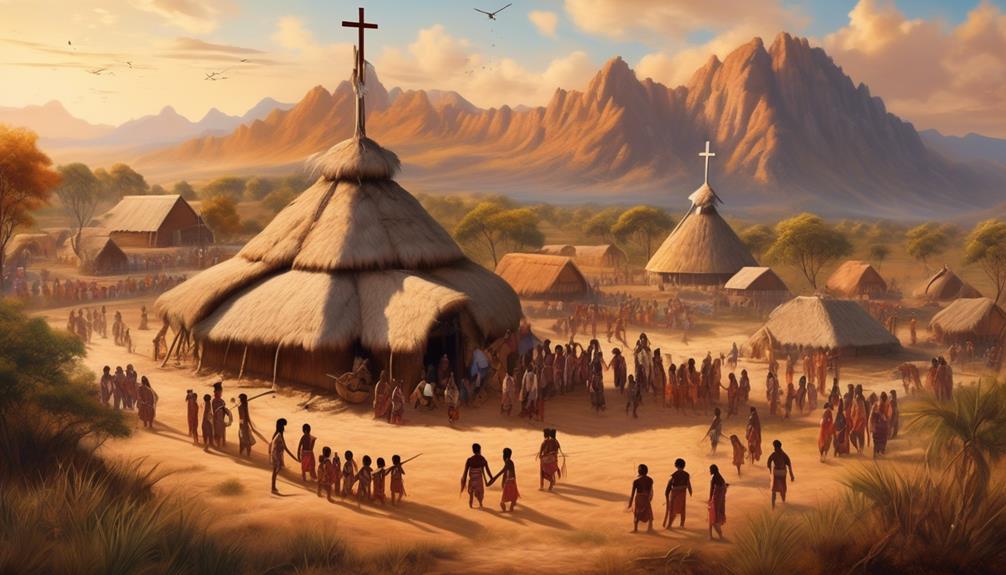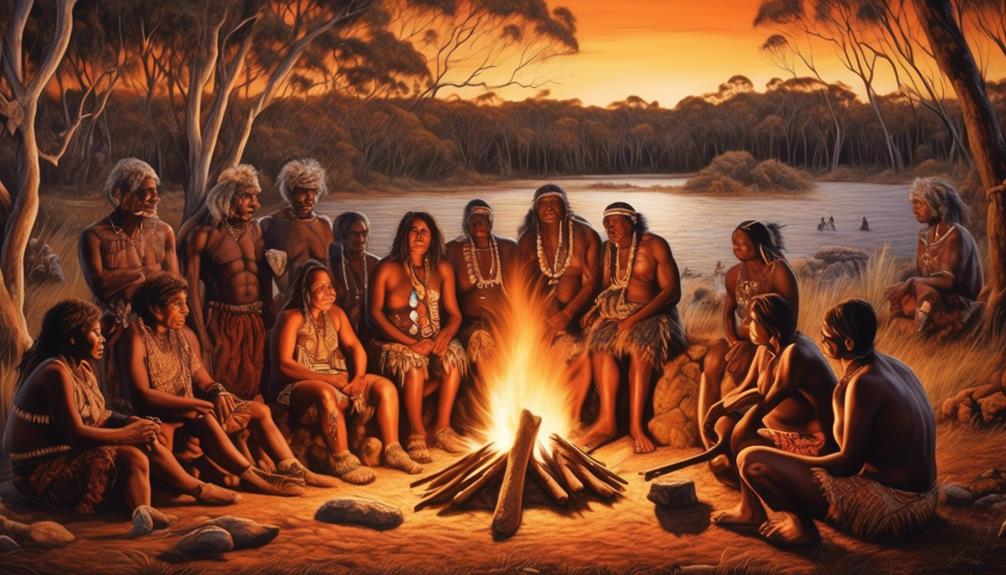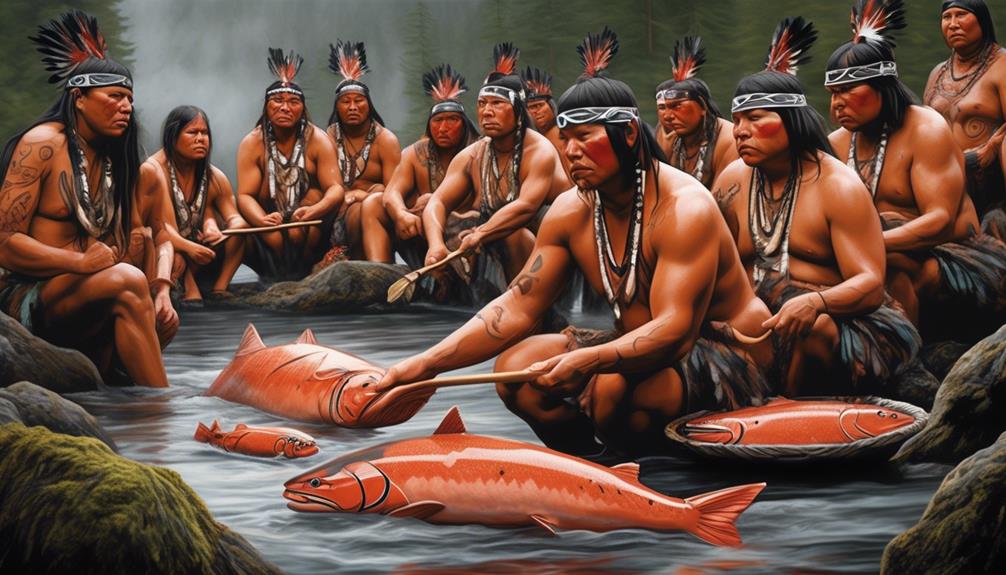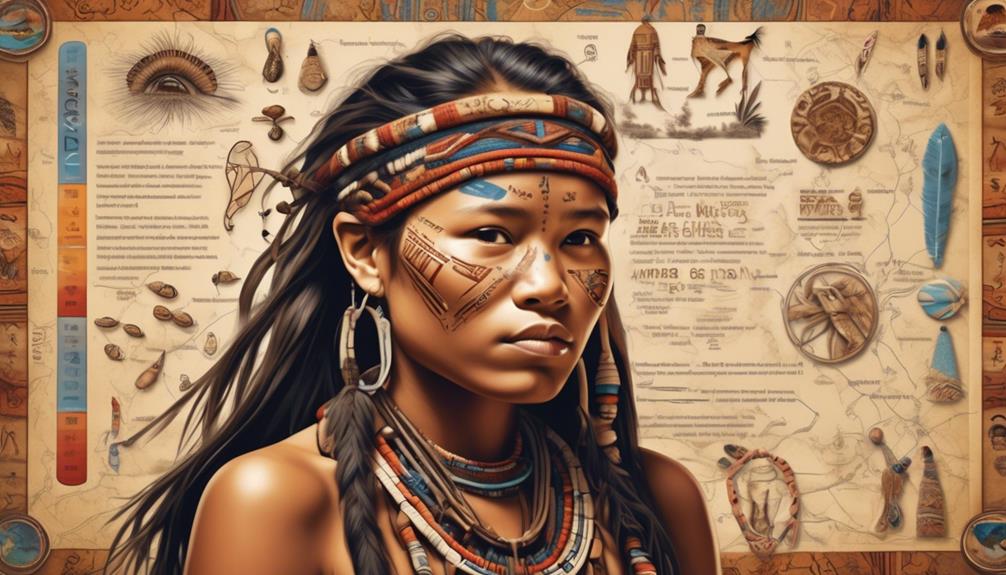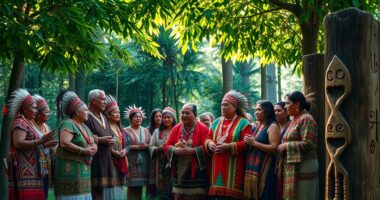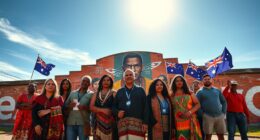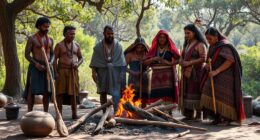What impact has the spread of Christianity had on the indigenous populations in the Americas? This question echoes throughout history, shaping cultures and societies in ways that continue to be felt today.
The arrival of Christian missionaries on the shores of the Americas brought with it a complex web of changes that altered the spiritual, cultural, and political landscape of indigenous communities.
As we explore the myriad consequences of this historical encounter, we uncover a tapestry of narratives that challenge our understanding of the past and present.
The interplay of tradition and transformation, power and resistance, faith and syncretism beckons us to unravel the intricate threads that bind the enduring legacy of Christianity to the indigenous peoples of the Americas.
Key Takeaways
- The spread of Christianity to the indigenous people in the Americas had a significant impact on their cultures, resulting in cultural assimilation and transformation.
- Indigenous resistance took various forms, including outright rejection, syncretism, and passive non-compliance, as they sought to preserve their cultural identity amidst assimilation pressures.
- Traditional belief systems and practices were suppressed and marginalized, leading to a decline in their preservation and the imposition of Christian doctrines.
- The spread of Christianity also led to a shift in socio-political power dynamics within indigenous societies, displacing or disempowering traditional indigenous leaders and perpetuating social inequalities.
Historical Conversion Efforts
Throughout history, various Christian missionary groups actively sought to convert indigenous people in the Americas to Christianity, often employing a combination of persuasion, coercion, and cultural assimilation. Conversion methods varied widely, ranging from peaceful evangelism to the use of force, depending on the specific missionary group and the context in which they were operating.
Some missionaries focused on persuasion through the sharing of Christian beliefs and values, while others resorted to more coercive tactics, such as withholding food or other resources until the indigenous people accepted Christianity. Cultural assimilation was also a common strategy, where missionaries encouraged or enforced the adoption of European customs, language, and dress as a means of facilitating the conversion process.
Indigenous resistance to these conversion efforts was diverse and multifaceted. Some groups outright rejected the missionaries and their teachings, clinging steadfastly to their traditional beliefs and practices. Others may have outwardly accepted Christianity while blending it with their indigenous spirituality in a syncretic manner. Additionally, resistance often took the form of passive non-compliance, with indigenous peoples outwardly conforming to the missionaries' demands while privately maintaining their original religious beliefs and practices.
This resistance highlights the complexity of the interaction between Christianity and indigenous populations in the Americas.
Cultural Assimilation and Transformation
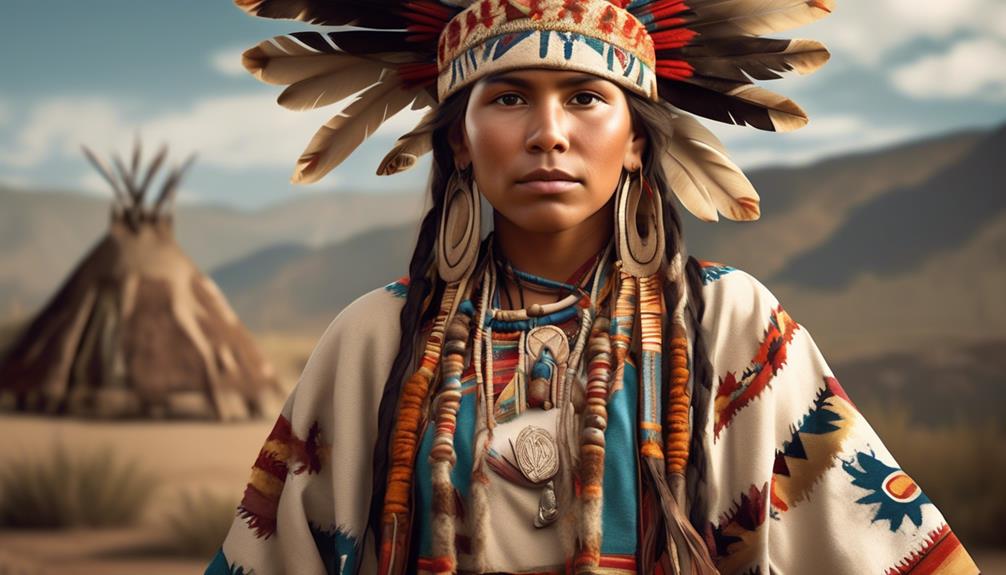
Cultural assimilation and transformation among indigenous populations in the Americas were influenced by a complex interplay of religious, social, and economic factors. The impact of Christianity on indigenous cultures resulted in a multifaceted process of cultural assimilation and transformation.
- Religious Syncretism: Indigenous belief systems often blended with Christian practices, leading to the emergence of unique religious syncretism, where traditional beliefs intertwined with Christian teachings.
- Social Reorganization: The introduction of Christianity brought about shifts in social dynamics, affecting traditional roles within indigenous communities and leading to the reorganization of societal structures.
- Economic Adaptation: The spread of Christianity also influenced economic activities, as indigenous communities adapted to new trade practices and economic systems introduced by Christian missionaries.
- Cultural Preservation and Identity Formation: Despite the pressures of assimilation, indigenous populations actively sought to preserve their cultural identity, leading to the formation of a hybrid cultural identity that reflected both indigenous traditions and Christian influences.
Disruption of Traditional Belief Systems
The impact of Christianity on indigenous cultures resulted in a multifaceted process of cultural assimilation and transformation, which significantly disrupted traditional belief systems among the native populations in the Americas. The introduction of Christianity led to the suppression and marginalization of indigenous spiritual practices and belief systems. This disruption was further exacerbated by the imposition of Christian doctrines and the establishment of missions aimed at converting the indigenous people. As a result, many traditional ceremonies, rituals, and belief systems were actively discouraged or forbidden, leading to a decline in their practice and preservation.
| Disruption of Traditional Belief Systems | Impact |
|---|---|
| Suppression of indigenous spiritual practices | Decreased cultural preservation |
| Imposition of Christian doctrines | Weakening of traditional belief systems |
| Prohibition of traditional ceremonies and rituals | Religious resistance among indigenous populations |
| Marginalization of indigenous belief systems | Loss of cultural identity |
| Conversion efforts by Christian missions | Decline in traditional belief system preservation |
The disruption of traditional belief systems not only led to a loss of cultural identity but also sparked religious resistance among indigenous populations striving to preserve their heritage. This resistance has contributed to ongoing efforts to revitalize and reclaim traditional belief systems, emphasizing the importance of cultural preservation in the face of religious assimilation.
Socio-Political Power Dynamics
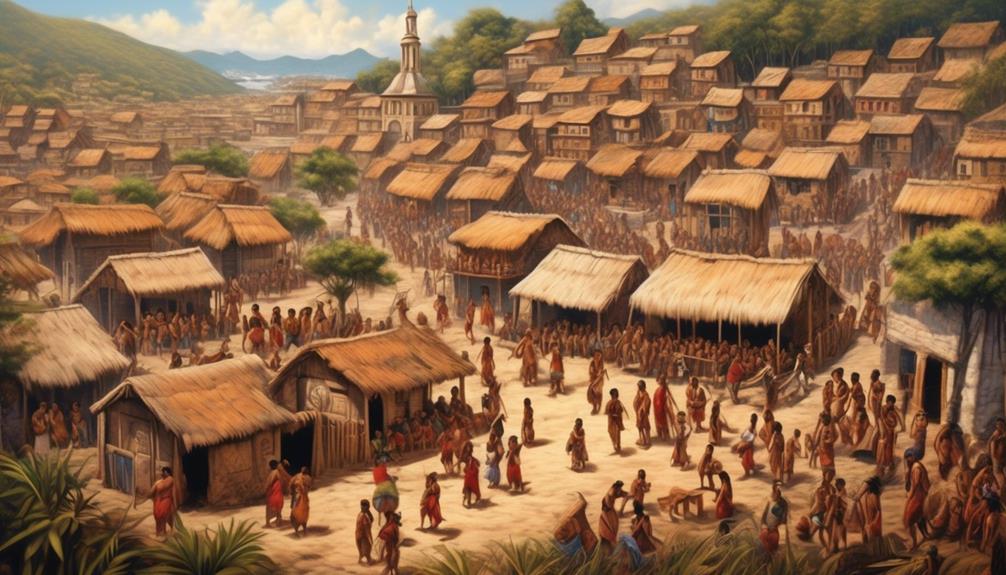
Indigenous societies in the Americas experienced a significant shift in socio-political power dynamics following the introduction of Christianity by European colonizers. This shift led to complex social inequalities and reshaped the power structures within these societies.
- Erosion of Indigenous Leadership: The arrival of Christianity often led to the displacement or disempowerment of traditional Indigenous leaders, as European colonizers sought to impose their own religious and political authority.
- Christian Missionaries and Social Hierarchy: Christian missionaries played a pivotal role in perpetuating social inequalities by aligning themselves with colonial powers and often reinforcing existing power imbalances within Indigenous communities.
- Conversion and Access to Resources: Conversion to Christianity became a means for Indigenous people to gain access to certain resources and privileges, creating a new social hierarchy based on religious affiliation.
- Resistance and Adaptation: Despite these power dynamics, Indigenous communities have displayed resilience through resistance movements and adaptation strategies, seeking to reclaim and redefine their socio-political power within the framework of Christianity.
The introduction of Christianity to the Indigenous peoples in the Americas not only disrupted traditional power structures but also established new social inequalities that continue to impact these communities today.
Contemporary Spiritual Syncretism
In contemporary society, the intertwining of Indigenous spiritual beliefs with Christian practices and rituals has given rise to a phenomenon of spiritual syncretism that reflects the complex cultural dynamics at play. This contemporary spirituality is characterized by religious hybridity, where traditional Indigenous beliefs coexist and intermingle with Christian elements. This syncretic approach to spirituality is a testament to the adaptability and resilience of Indigenous cultures in the face of historical and ongoing religious influence.
Contemporary spiritual syncretism represents a significant shift in the religious landscape, as it challenges traditional dichotomies between Indigenous and Christian belief systems. The blending of rituals, ceremonies, and symbols from both Indigenous and Christian traditions has led to the emergence of unique and diverse forms of worship and spiritual expression. This phenomenon underscores the ongoing negotiation and reinterpretation of religious identities in Indigenous communities.
Furthermore, contemporary spiritual syncretism serves as a lens through which to examine the complexities of cultural exchange and adaptation. It offers valuable insights into the ways in which Indigenous peoples navigate the legacy of colonialism while asserting their cultural autonomy. The evolving nature of spiritual syncretism reflects the enduring impact of historical encounters between Indigenous peoples and Christian missionaries, highlighting the intricate interplay of tradition, resilience, and adaptation in contemporary Indigenous spirituality.
Frequently Asked Questions
How Did the Spread of Christianity Affect the Economic and Social Structures of Indigenous Communities in the Americas?
The spread of Christianity significantly impacted the economic and social structures of indigenous communities in the Americas.
Economic transformation occurred as traditional trade networks and resources were reshaped to align with Christian doctrines.
Social hierarchy was impacted with the introduction of new power structures and the marginalization of indigenous belief systems.
These enduring impacts continue to shape the economic and social dynamics of indigenous communities today.
What Are Some Examples of How Traditional Indigenous Belief Systems Were Disrupted and Replaced by Christian Teachings?
Examples of cultural transformation due to the spread of Christianity included the disruption and replacement of traditional indigenous belief systems.
Spiritual syncretism emerged as Christian teachings intertwined with indigenous spiritual practices, leading to the creation of new religious expressions.
This resulted in a complex blend of beliefs and practices, impacting the spiritual landscape of indigenous communities in the Americas.
How Did the Arrival of Christianity Impact the Political Power Dynamics Within Indigenous Societies?
The arrival of Christianity had a significant impact on the political power dynamics within indigenous societies. Leadership dynamics shifted as traditional leaders were often replaced or marginalized by Christian authorities. This had a lasting impact on indigenous communities, altering their political structures and authority figures.
The imposition of Christianity also disrupted traditional power balances, leading to long-lasting changes in the political landscape of the Americas.
What Are Some Contemporary Examples of Spiritual Syncretism Between Christianity and Indigenous Belief Systems in the Americas?
Contemporary examples of spiritual syncretism between Christianity and indigenous belief systems in the Americas showcase a fascinating cultural exchange. From the incorporation of indigenous rituals into Christian ceremonies to the blending of traditional spiritual practices with Christian theology, these syncretism examples highlight the enduring impact of Christianity on indigenous spiritual traditions.
This complex intertwining of beliefs reflects the ongoing influence of Christianity and the resilience of indigenous cultures in the face of historical and religious change.
How Did the Process of Cultural Assimilation and Transformation Impact the Daily Lives and Practices of Indigenous People in the Americas?
The impact of cultural assimilation and transformation had a profound effect on the daily practices of indigenous people in the Americas. Assimilation and transformation altered traditional customs and belief systems, influencing everything from spiritual practices to social structures. These changes continue to shape indigenous communities today, as they navigate the enduring legacy of the spread of Christianity.
The enduring impact of this process has had far-reaching consequences, shaping the cultural landscape of the Americas.
Conclusion
In conclusion, the spread of Christianity to the indigenous people in the Americas has resulted in both cultural assimilation and a disruption of traditional belief systems.
While it has brought about socio-political power dynamics, it has also led to contemporary spiritual syncretism.
The enduring impact of Christianity on indigenous communities is a complex and multifaceted phenomenon, shaping their identity and belief systems in ways that continue to be felt today.
